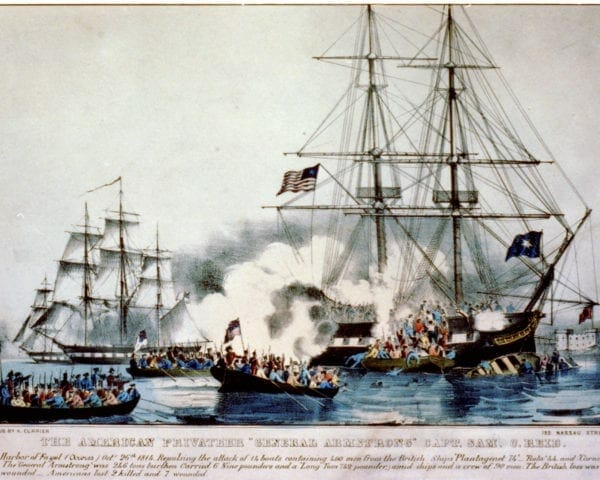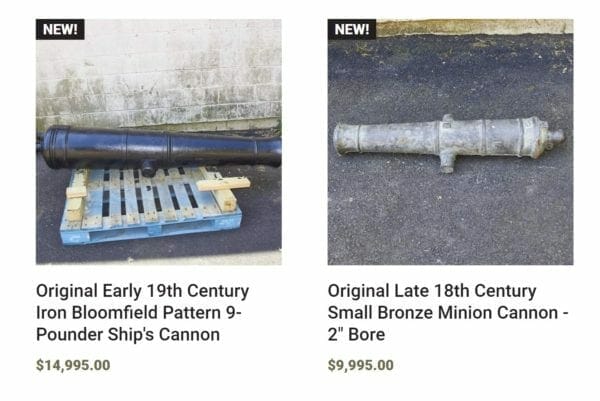USA – -(AmmoLand.com)- President Joe Biden has said on numerous occasions that a private individual couldn’t own a cannon at the time of the American Revolution. Is he correct?
In short, no, he is not correct. (Shocker!)
At the time of the Revolutionary War and in the following early years of the United States, there were no laws prohibiting the private ownership of cannons. Neither King George III nor President George Washington (or any other president, for that matter), issued any kind of law that prohibited people from owning cannons.
Now, I would be remiss not to mention that the British Crown did make it illegal for the colonists to cast their own cannons while under the King’s rule. To do so was deemed treasonous. But owning an already-made cannon? Nope, no issue of treason there.
Privately organized and funded artillery companies in the colonies date all the way back to the 1630s. A century later, in the 1740s, there are records of Benjamin Franklin helping organize artillery companies while stressing that they were made completely of volunteers and armed at their own expense.
How do volunteers arm an artillery company? By spending their own money to buy a cannon!
One of the driving forces behind the first major battles of the Revolution was because the British soldiers were coming to confiscate privately-owned arms – including cannons and mortars – such as ones that were being held by veterans of the French and Indian War as war trophies.

During the course of the Revolution, approximately 1,700 letters of Marque were issued to privateers. In the War of 1812, President James Madison issued more than 500 letters of Marque to privateers. These letters of marque created what was, essentially, legal piracy, and it was sanctioned by the government and even deemed necessary. So how did these privateers arm their vessels? With cannons that they purchased as individuals.
Our colonial navy had approximately 1,200 cannons on board less than 65 ships. The privateers, on the other hand, had almost 15,000 cannons – all privately owned.
Throughout much of this country’s history, privately-raised militia units have fought side by side with regular artillery units, with the only difference being that these militia units were using cannons that had been privately purchased. Many artillery units in the Civil War were funded privately.
It wasn’t until 1903 that the Militia Act led to the winding down of private militias, but it did nothing to stop the sale of cannons to individuals.
The godfather of milsurp, Francis Bannerman, sold countless cannons to individuals in the late-19th and early-20th centuries.
The National Firearms Act of 1934, which is, by far, the most restrictive piece of Federal legislation related to the ownership of arms, says nothing about cannons. Zip. Zilch. Nada. It wasn’t until 1968 that things we regard as modern artillery – like bazookas, for instance – were regulated further.
But what about muzzleloading cannons, like the ones used during the Revolutionary War? They’re conspicuously absent in any of the legislation. You could buy a cannon as an individual in the Revolution era, and you can still buy one today as an individual.

So with that, let us consider the matter settled, and make it clear once and for all: there never has been, in the entire history of this nation dating back more than 400 years to the early 1600s, any restrictions whatsoever on an individual’s ability to own a cannon.
About Logan Metesh
Logan Metesh is a historian with a focus on firearms history and development. He runs High Caliber History LLC and has more than a decade of experience working for the Smithsonian Institution, the National Park Service, and the NRA Museums. His ability to present history and research in an engaging manner has made him a sought after consultant, writer, and museum professional. The ease with which he can recall obscure historical facts and figures makes him very good at Jeopardy!, but exceptionally bad at geometry.

